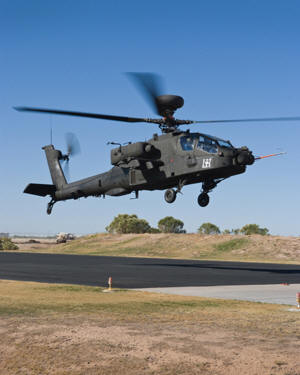
NEWSROOM
 |
NEWSROOM |
|
|
|
|
|||
|
Boeing Apache
Block III Helicopter Makes 1st Flight By Mike Mitchell |
||||
 |
December 5, 2009 - The Boeing Apache Block III program has completed the
first flight of its structures test aircraft. The test, conducted
November 23 in
"This flight demonstration is another crucial step as the U.S. Army and
Boeing work together to meet the objectives of the Apache Block III
program," said Col. Shane Openshaw, Army Apache project manager. "The
Apache Block III helicopter meets the Army's requirement to sustain the
aircraft for its life cycle while providing superior capabilities to
Army aviators, battlefield commanders and soldiers."
|
|||
| Boeing AH-64D Apache Block III structures test | ||||
|
Apache Block III incorporates 25 technology insertions, providing
Network-Centric warfare capabilities in the multi-role combat helicopter
for the Army's future force. To enable battlespace dominance, the
program will incoporate open systems architecture, wideband network
communications, extended range sensing, level IV unmanned aerial vehicle
control, extended range fire control radar, extended range missiles, and
data fusion to merge off- and on-board sensor imagery.
With improved aircraft flight performance and reduced operations and
support costs, the modernized helicopter will be an important bridge to
the future for the U.S. Army. The Block III Apache will interface with
today's Stryker Brigade Combat Teams and Future Combat Systems with a
fully compatible and rapidly reconfigurable open systems architecture
mission processor design. Other key benefits to the U.S. Army include a
reduced logistics footprint, and improved readiness and deployability. |
||||
|
A unit of The Boeing Company, Boeing Integrated Defense Systems is one
of the world's largest space and defense businesses specializing in
innovative and capabilities-driven customer solutions, and the world's
largest and most versatile manufacturer of military aircraft.
Headquartered in |
| ?AvStop Online Magazine Contact Us Return To News |
|